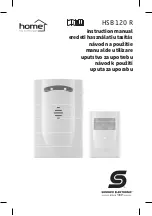
14
Vertical Fillet Welds (Fig 1-6)
10
o
Longitudinal Angle
Direction of Travel
10
o
to 20
o
Longitudinal Angle
30
o
to 60
o
Transverse
Angle
30
o
to 60
o
Transverse
Angle
Direction of Travel
(Fig 1-7)
5
o
to15
o
Longitudinal
Angle
30
o
to 60
o
Transverse
Angle
Distance from the MIG Torch Nozzle
to the Work Piece
The electrode wire stick out from the MIG Torch noz-
zle should be between 10mm to 20mm. This dis-
tance may vary depending on the type of joint that
is being welded.
Travel Speed
The speed at which the molten pool travels influ-
ences the width of the weld and penetration of the
welding run.
MIG Welding (GMAW) Variables
Most of the welding done by all processes is on car-
bon steel. The items below describe the welding vari-
ables in short-arc welding of 24gauge (0.024”, 0.6mm)
to ¼” (6.4mm) mild sheet or plate. The applied tech-
niques and end results in the GMAW process are con-
trolled by these variables.
Preselected Variables
Preselected variables depend upon the type of ma-
terial being welded, the thickness of the material, the
welding position, the deposition rate and the me-
chanical properties.
These variables are:
• Type of electrode wire
• Size of electrode wire
• Type of gas
• Gas flow rate
Primary Adjustable Variables
These control the process after preselected variables
have been found. They control the penetration, bead
width, bead height, arc stability, deposition rate
and weld soundness.
They are:
• Arc Voltage
• Welding current (wire feed speed)
• Travel speed
Secondary Adjustable Variables
These variables cause changes in primary adjustable
variables which in turn cause the desired change in
the bead formation. They are:
1. Stick-Out
(distance between the end of the con-
tact tube (tip) and the end of the electrode wire).
Maintain at about 10mm stick-out
2. Wire Feed Speed.
Increase in wire feed speed
increases weld current. Decrease in wire feed speed
decreases weld current.
Electrode Stick-Out
(Fig 1-8)
Gas Nozzle
Tip to
Work Distance
Contact Tip (Tube)
Electrode Wire
Actual
Stick-Out
3. Nozzle Angle.
This refers to the position of the
welding gun in relation to the joint. The transverse
angle is usually one half the included angle between
plates forming the joint. The longitudinal angle is the
angle between the centre line of the welding gun
and a line perpendicular to the axis of the weld. The
longitudinal angle is generally called the Nozzle
Angle and can be either trailing (pulling) or lead-
Transverse & Longitudinal
Nozzle Axes (Fig 1-9)
Longitudinal Angle
Transverse Angle
Axis of Weld
Summary of Contents for WT200MP
Page 1: ...OPERATING INSTRUCTIONS WT200MP 200A MULTI PROCESS MIG MMA STICK TIG WELDER www weldtech net nz...
Page 10: ...10 Welding Settings...
Page 24: ...24 MMA Stick Troubleshooting...
Page 27: ...27 WT200MP Welding Machine www weldtech net nz TIG Welding Troubleshooting...
Page 34: ...34...
Page 35: ...35 WT200MP Welding Machine www weldtech net nz...















































